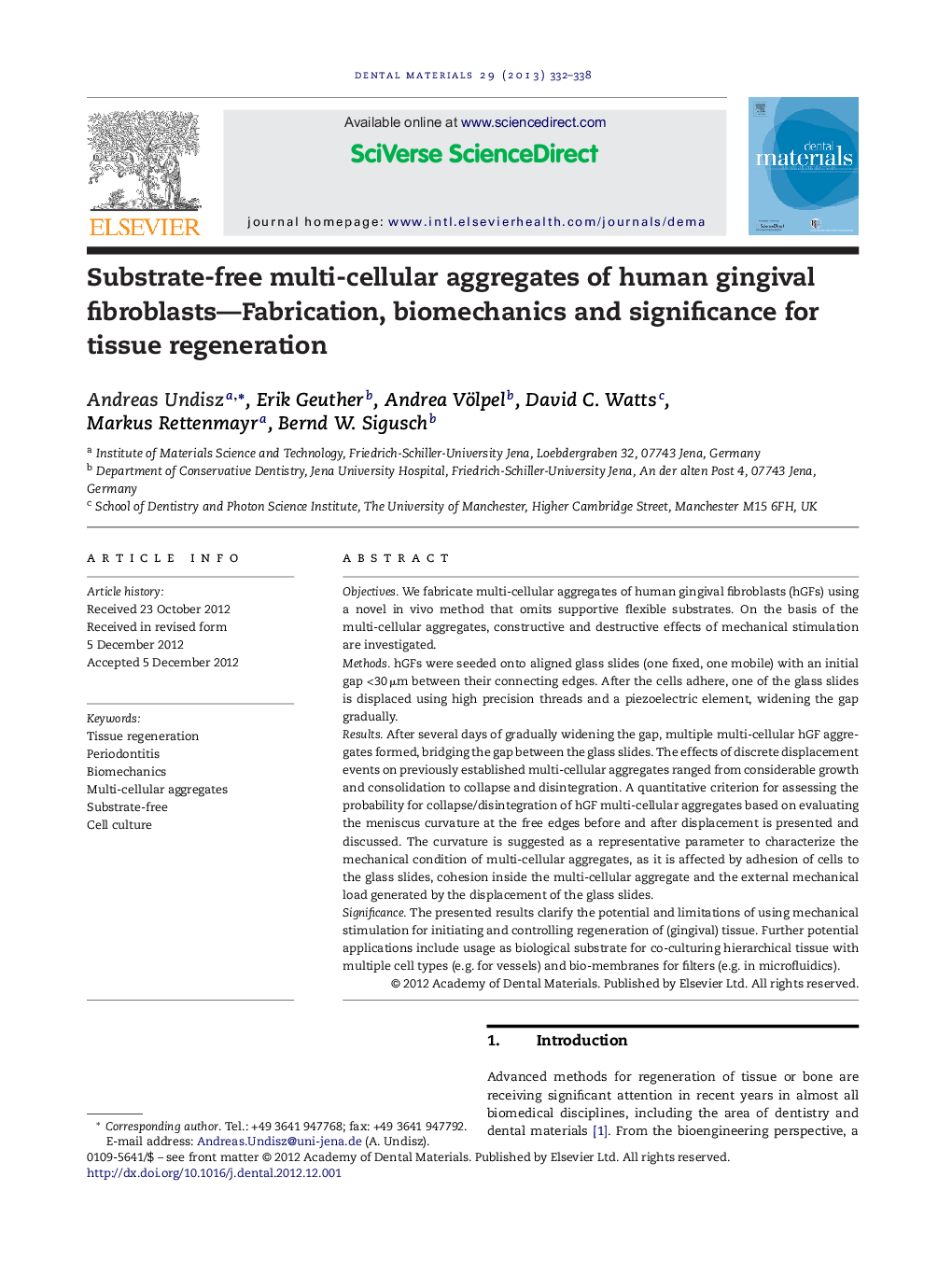| Article ID | Journal | Published Year | Pages | File Type |
|---|---|---|---|---|
| 1421285 | Dental Materials | 2013 | 7 Pages |
ObjectivesWe fabricate multi-cellular aggregates of human gingival fibroblasts (hGFs) using a novel in vivo method that omits supportive flexible substrates. On the basis of the multi-cellular aggregates, constructive and destructive effects of mechanical stimulation are investigated.MethodshGFs were seeded onto aligned glass slides (one fixed, one mobile) with an initial gap <30 μm between their connecting edges. After the cells adhere, one of the glass slides is displaced using high precision threads and a piezoelectric element, widening the gap gradually.ResultsAfter several days of gradually widening the gap, multiple multi-cellular hGF aggregates formed, bridging the gap between the glass slides. The effects of discrete displacement events on previously established multi-cellular aggregates ranged from considerable growth and consolidation to collapse and disintegration. A quantitative criterion for assessing the probability for collapse/disintegration of hGF multi-cellular aggregates based on evaluating the meniscus curvature at the free edges before and after displacement is presented and discussed. The curvature is suggested as a representative parameter to characterize the mechanical condition of multi-cellular aggregates, as it is affected by adhesion of cells to the glass slides, cohesion inside the multi-cellular aggregate and the external mechanical load generated by the displacement of the glass slides.SignificanceThe presented results clarify the potential and limitations of using mechanical stimulation for initiating and controlling regeneration of (gingival) tissue. Further potential applications include usage as biological substrate for co-culturing hierarchical tissue with multiple cell types (e.g. for vessels) and bio-membranes for filters (e.g. in microfluidics).
